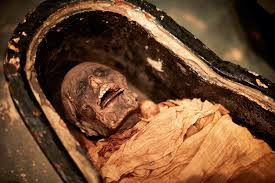The sound of a 3,000 year-old Egyptian mummy can finally be heard, after engineers 3D printed a version of its vocal tract.
The noise – a short, vowel-like sound – gives a hint at what the ancient mummified individual might have sounded like. But it is only a hint, since scientists are not able to produce anything like speech.
The researchers could only produce a single sound: a vowel that they describe as being between the English words “bed” and “bad”. But it offers a hint of what the rest of his voice might sound like.
It might also lead to future breakthroughs that will allow the public the chance to hear what ancient individuals might really have sounded like.
Scientists questioned whether making Nesyamun “speak” again was ethically responsible, especially given mummies are treated not as objects but as the remains of once-living people.
“The team concluded that the potential benefts outweighed the concerns, particularly because Nesyamun’s own words express his desire to ‘speak again’ and that the scientifc techniques used were non-destructive,” they write in the paper published in Scientific Reports.
“Given Nesyamun’s stated desire to have his voice heard in the afterlife in order to live forever, the fulflment of his beliefs through the synthesis of his vocal function allows us to make direct contact with ancient Egypt by listening to a sound from a vocal tract that has not been heard for over 3000 years, preserved through mummification and now restored through this new technique,” they conclude.
The Independent
 Lebanese Ministry of Information
Lebanese Ministry of Information



